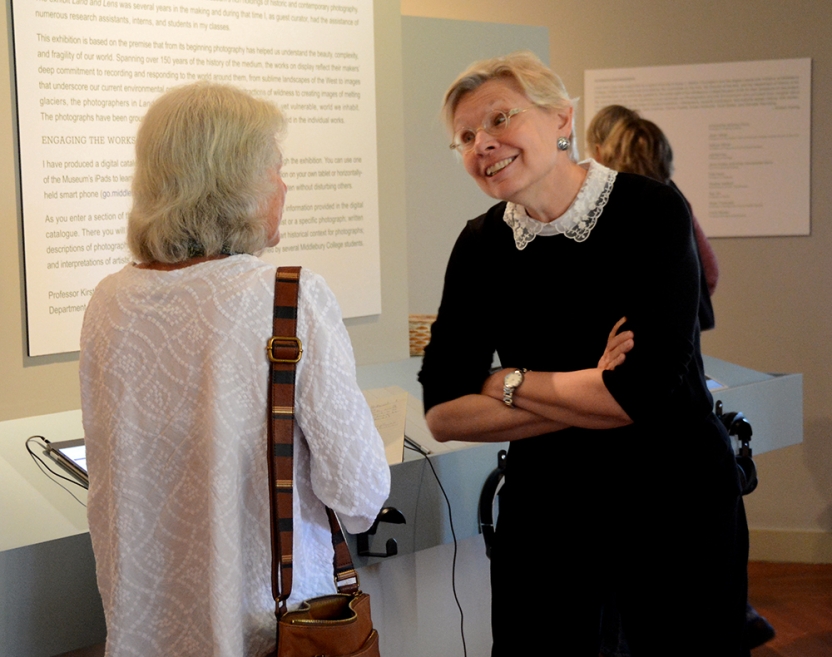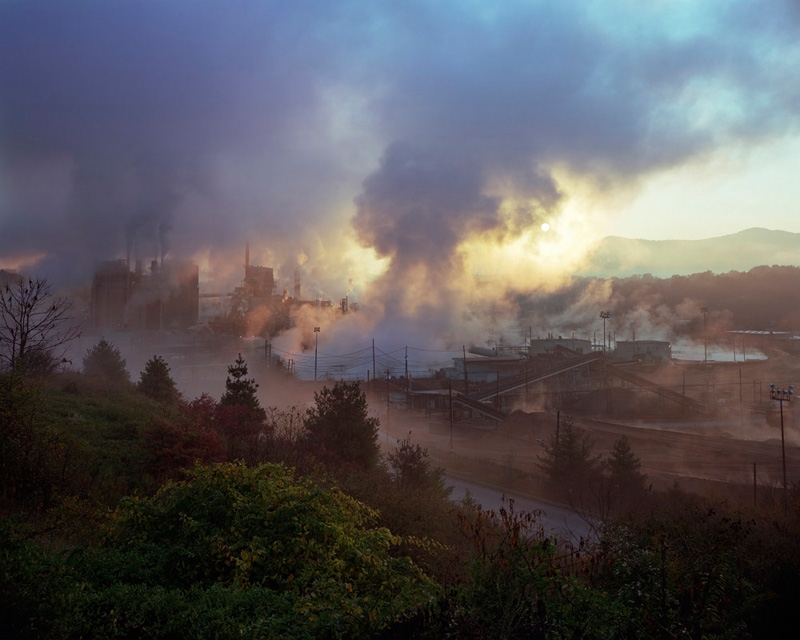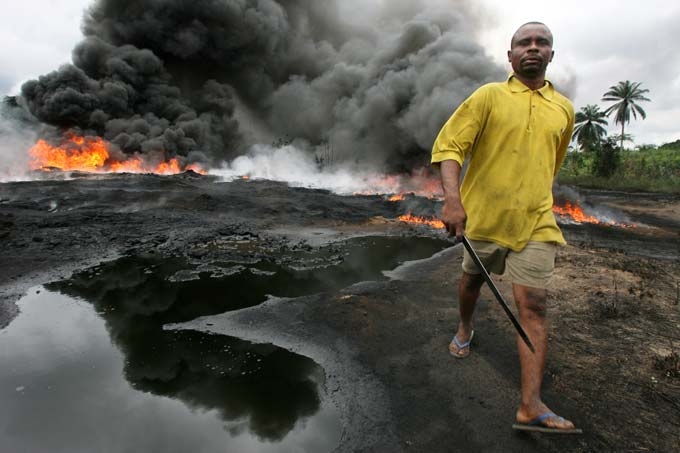Art Historian Kirsten Hoving Curates 165 Years of Environmental Photography

MIDDLEBURY, Vt. – Kirsten A. Hoving, the Charles A. Dana professor of history of art and architecture, first conceived of the Middlebury College Museum of Art’s new exhibition “Land and Lens: Photographers Envision the Environment” as a way to showcase the museum’s rich holdings in photography.
Yet as the concept took shape, the art historian saw that “works of art, especially photographs in our collection, can help us understand environmental issues and make a difference,” as she explained at a gallery talk on September 29.
“Land and Lens,” which runs through December 15, has the power to transport viewers into the “beauty, complexity, and fragility” of the natural world. It can touch us deeply with “ethereal moments of majestic transcendent nature,” said Hoving, and it can distress us with images such as “the biggest, most toxic waste site in the Western Hemisphere” at Hanford, Washington.
Containing works by such masters of photography as Alfred Stieglitz, Ansel Adams, Berenice Abbott, Brett Weston, and Paul Strand, the exhibition has allure for anyone interested in the history of the craft. The show spans more than a century and a half of environmental photography, from John Adams Whipple’s 1851 daguerreotype of the Moon to Jeffrey Milstein’s 2015 aerial color print of Coney Island, while, at the same time, it makes a powerful statement about the damaging effects the human race has had on the Earth’s air, water, and natural resources.
With support from the Mellon Foundation and from Middlebury’s Digital Liberal Arts Initiative, the exhibition is accompanied by a digital catalogue that can be accessed using one of the iPads made available at the museum, or on a tablet, smartphone, or computer anywhere with an Internet connection.
The digital catalogue utilizes the knowledge of Middlebury faculty members and other experts to explain the importance of each image via text or video, or both. Selected works in the exhibit are also interpreted through original music composed and performed by Middlebury College students.
Hoving devoted a number of years to developing the exhibition with the help of research assistants, students, colleagues, and members of the museum staff. The project that began as “a way to showcase the museum’s holdings in photography,” evolved into a presentation that comprises 71 photographs, 22 videos, 114 pages of text, and various slideshows, sidebars, interviews, and musical performances.


The grandeur of the American West, the vastness of the Great Plains, and the wonders of outer space are all represented in the show, but so too are toxic waterways, disappearing Arctic ice, and the “residual landscape” left behind by manufacturing, mining, and power plants. Said Hoving, “Some of the photographs in the exhibit are clearly designed to draw our attention to specific natural places that have been detrimentally affected by humans.
“This is especially true of much of contemporary photography that brings our attention to the human-altered landscape. I see it as a move away from the grand scenic photography of Ansel Adams, and instead as a move toward images that convey a far greater sense of urgency.” Her case in point is Jeff Rich’s Blue Ridge Paper Mill, Pigeon River, Canton, North Carolina, 2008 that shows clouds of smoke emitting from a paper mill along the banks of a river glowing in the rays of morning sunshine. As one reviewer termed it, Rich’s image “is a beautiful study in the effects of pollution.”
Another photograph in the exhibit that “straddles the divide between disturbing facts and environmental beauty” is George Osodi’s Oil Spill Near Farm Land Ogoni, 2007. Hoving selected the powerful image from Osodi’s book about the effects of oil extraction on the people and landscape of Nigeria’s Niger Delta.
“At first sight you’re like, ‘what a beauty,’ but then behind it is a huge Armageddon. It’s like hell on earth,” said photographer Ogundi about the oil-well fires and dense black clouds of smoke that envelop the sky in his picture.
Hoving hopes that museum-goers will spend time at the exhibit and ponder three questions: How does aesthetic appeal relate to environmental message? Where do we draw the line between art and activism? And does a photograph need to be visually appealing in order to attract the attention of viewers who will then unpack its deeper meaning?
“I hope the ‘Land and Lens’ exhibition allows you to set your eyes on the earth in ways that may enlighten your thinking about the environment, and about the role that artists can play” in bringing those issues to the forefront, the professor of art history said.
Immediately after the talk, Hoving met with attendees inside the museum to discuss the theme of the exhibit and talk about the dramatic photographs she selected to illustrate it.

